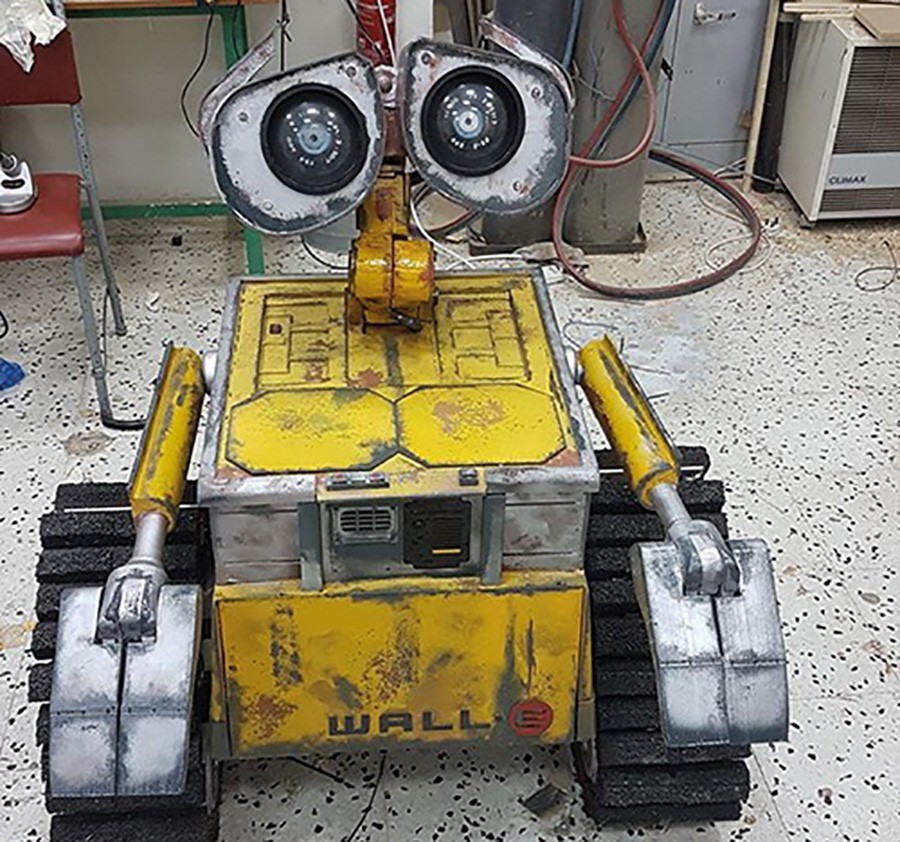Think sci-fi, think robots. Whether benevolent, benign, or bloodthirsty, these artificially-intelligent automatons have long captured our imagination. However, thanks to recent advances in mechanical and programming technology, it looks like they are set to break the bonds of fiction.
The Department of AI (Faculty of ICT, University of Malta) is currently in the process of introducing Robotics and Automation into its programs, and starting from October 2017, they will offer the first modules at both Undergrad and Postgrad level. In advance of this, students are being tasked with some interesting robotics projects. Edward Cachia, Owen Attard, Matthew Tanti, and Enrico Aquilina (supervised by Prof. Alexei Dingli, Dr Claudia Borg, James Catania, and George Camilleri) came together to help build a full-size replica of Wall-E, the Disney-Pixar film’s eponymous lead. The team was split into three groups, each researching and planning individual parts of the robot. The aim was to exactly replicate the movement and aesthetics of the movie character.
Wall-E made his first appearance at the Malta Robotics Olympiad 2017, where thousands of people flocked to greet him.
The Wall-E robot is granted movement through a track drive, similar to that of a tank. Being underneath the rest of the robot, this part bears most of the load and pressures from the moving parts, which is why research into the best materials and gearing ratios was required to make it rigid and able to withstand abuse during motion. Above the track drive sits the body, its aesthetic appearance concealing all the hardware required to make Wall-E work. When researching materials, the team took into account the need to balance sturdiness with lightness, ultimately deciding on medium-density fiberboard. The arms were split into two main parts: the lower arm and the hands. The latter were created using 3D printing, to make them light and precise. Expanded polystyrene was used for the lower part of the arm, as it is both robust and low-weight. To facilitate arm rotation, servo motors were incorporated with metal gears, providing durability.




Wall-E’s personality is created by the emotional expression achieved by moving his head and neck. Great consideration was taken in choosing head materials in order to keep them light enough for smooth movement. Servo motors are used to provide the head with human-like motion in all directions and also to raise and lower the eyebrows, providing expressions. The lightest materials possible were chosen for the head, such as plastic and acrylic glass.
Wall-E made his first appearance at the Malta Robotics Olympiad 2017, where thousands of people flocked to greet him. Who knows which friendly robot will have the honour of greeting the curious crowd next year?





Comments are closed for this article!